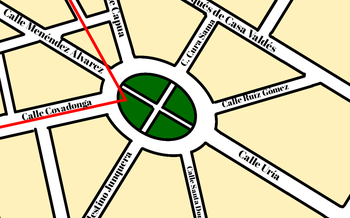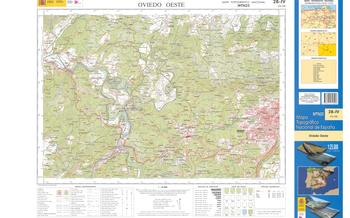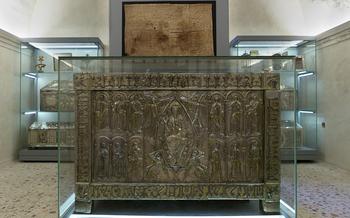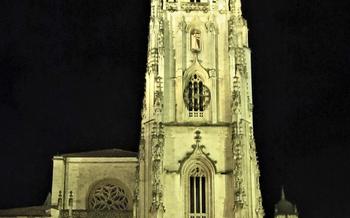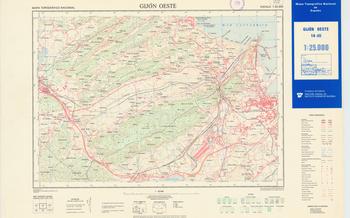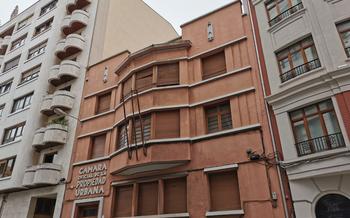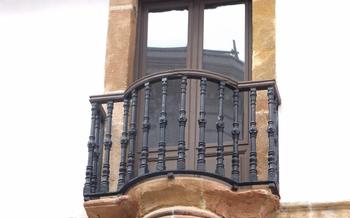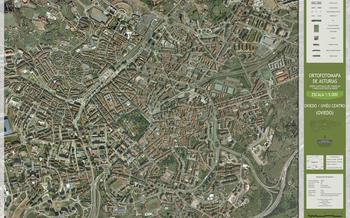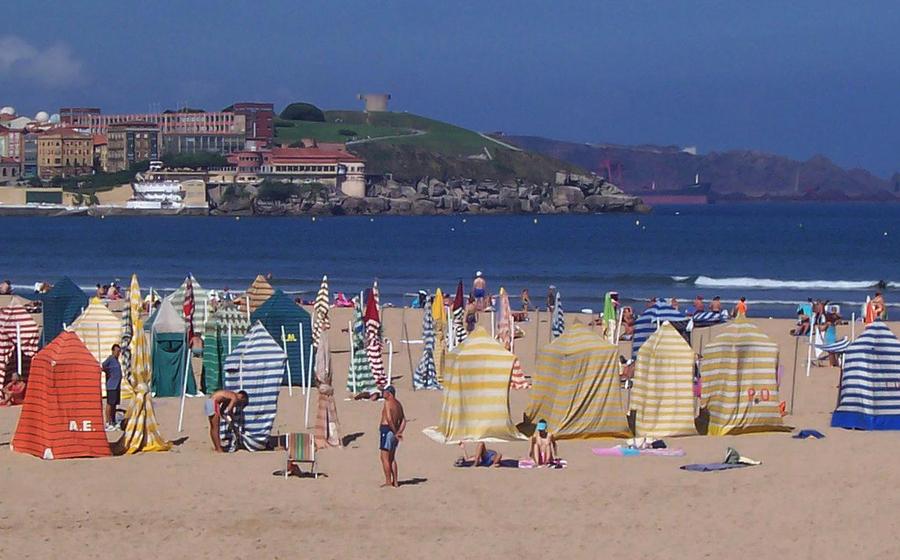
The Sanctuary of Covadonga
- The Sanctuary of Covadonga: A Sacred Site in the Asturian Mountains
- Religious and Cultural Importance: A Center of Devotion
- Practical Information for Visitors: Planning Your Pilgrimage
- Pilgrim's Route: A Journey of Faith and Reflection
- The Holy Cave: A Place of Mystery and Devotion
- The Basilica: A Symbol of Faith and Resilience
- The Museum: Unveiling the Sanctuary's Past
- The Mirador de la Reina: A Breathtaking Panorama
- Accommodations for Pilgrims and Visitors
- Guided Tours: Exploring with Local Experts
- Insider Tip: Discovering Hidden Gems
The Sanctuary of Covadonga: A Sacred Site in the Asturian Mountains
Nestled in the heart of the Picos de Europa mountains, the Sanctuary of Covadonga stands as a beacon of faith and a testament to Spain's rich history. Its origins date back to the 8th century when a small cave, now known as the Holy Cave, became a place of pilgrimage after the Virgin Mary is said to have appeared to a Visigothic nobleman named Pelayo. Inspired by this divine encounter, Pelayo led the Asturian people to victory against the invading Moors, marking the beginning of the Reconquista, the centuries-long struggle to reclaim the Iberian Peninsula from Muslim rule.
Over the centuries, the sanctuary grew in significance, becoming a symbol of Asturian identity and a popular destination for pilgrims from across the Christian world. In the 19th century, the basilica was built, adding to the grandeur of the site. Today, Covadonga remains a place of deep religious devotion and cultural heritage, attracting visitors from around the globe who come to witness its beauty, explore its history, and seek spiritual inspiration.
The natural surroundings of Covadonga are equally captivating. The sanctuary is enveloped by lush forests, cascading waterfalls, and towering peaks, creating a breathtaking landscape that is perfect for hiking, nature walks, and wildlife spotting. The air is fresh and invigorating, filled with the sweet fragrance of wildflowers and the melodious songs of birds. Whether you are a pilgrim seeking spiritual fulfillment or a nature enthusiast looking for adventure, Covadonga offers an unforgettable experience that will leave you in awe.
Religious and Cultural Importance: A Center of Devotion
The Sanctuary of Covadonga holds immense religious and cultural significance, serving as a revered pilgrimage site for Catholics worldwide. The sanctuary is dedicated to the Virgin of Covadonga, the patron saint of Asturias. According to legend, the Virgin Mary appeared to a Christian warrior named Pelayo in a cave in the Picos de Europa mountains, inspiring him to lead the Reconquista, the Christian reconquest of Spain from the Moors. The cave, now known as the Holy Cave, is considered a sacred site and attracts millions of pilgrims each year.
Throughout the year, the sanctuary hosts numerous religious celebrations, festivals, and processions honoring the Virgin of Covadonga. The most prominent event is the annual pilgrimage, which takes place on September 8th, the Feast of the Nativity of Mary. During this time, the sanctuary bustles with activity as pilgrims from across Spain and beyond converge to pay homage to the Virgin.
The sanctuary's religious significance is further enhanced by its status as a UNESCO World Heritage Site, recognizing its outstanding universal value. Its cultural importance lies in its role as a symbol of Asturian identity and a source of inspiration for artists, writers, and musicians throughout history.
Practical Information for Visitors: Planning Your Pilgrimage
Getting to Covadonga: Transportation Options
Reaching Covadonga is relatively straightforward, with several transportation options available. The nearest airport is Asturias Airport (OVD), located about 80 kilometers from the sanctuary. From the airport, visitors can take a bus or rent a car to complete the journey. Alternatively, those coming from Madrid can take a direct train to Oviedo, the capital of Asturias, and then transfer to a bus or taxi to reach Covadonga.
Accommodation: Finding a Place to Stay
Covadonga offers a range of accommodation options to suit different budgets and preferences. For pilgrims, there are several albergues, or pilgrim hostels, providing basic yet comfortable lodging. Hotels and guesthouses are also available, offering a wider range of amenities and services. It's advisable to book accommodation in advance, especially during peak season (summer and religious holidays), to avoid any last-minute surprises.
Food and Drink: Local Delicacies and Dining Experiences
Asturian cuisine is renowned for its rich flavors and hearty dishes. Visitors to Covadonga should not miss trying the region's signature dish, fabada Asturiana, a bean stew with chorizo, morcilla, and pork. Other local delicacies include Cabrales cheese, made from cow, goat, and sheep milk, and fresh seafood from the Cantabrian Sea. To accompany your meal, be sure to sample the local cider, a slightly sparkling and refreshing beverage.
Guided Tours: Exploring the Sanctuary with Experts
For a deeper understanding of Covadonga's history, culture, and significance, consider booking a guided tour. Professional guides can provide insights and explanations that enhance the visitor's experience. Tours are available in various languages and can be tailored to individual interests and preferences. Advance booking is recommended to secure a spot, especially during peak season.
Pilgrim's Route: A Journey of Faith and Reflection
The Sanctuary of Covadonga has been a significant destination for pilgrims for centuries, attracting devout Catholics from across Spain and beyond. The Camino de Covadonga, a popular pilgrimage route, offers a unique opportunity to experience the spiritual and historical significance of the sanctuary while immersing oneself in the breathtaking Asturian landscape.
Walking the Camino de Covadonga is a profound journey of faith and reflection, allowing pilgrims to connect with their spirituality and deepen their understanding of the region's rich religious heritage. Along the way, pilgrims can visit ancient churches, monasteries, and holy sites, each with its unique stories and traditions.
The path offers a chance for personal growth and introspection, as pilgrims reflect on their lives and seek guidance and inspiration from the divine. The solitude and natural beauty of the surroundings provide an ideal setting for contemplation and spiritual renewal.
For those planning a pilgrimage to Covadonga, careful preparation is essential. Adequate physical conditioning, suitable footwear, and appropriate clothing are crucial for a comfortable and safe journey. Pilgrims should also research the route, plan their itinerary, and consider booking accommodations in advance, especially during peak season.
Whether embarking on the pilgrimage for religious reasons, cultural exploration, or personal growth, the Camino de Covadonga promises an unforgettable experience, leaving a lasting impact on the hearts and minds of those who undertake this sacred journey.
The Holy Cave: A Place of Mystery and Devotion
The Holy Cave, located within the Sanctuary of Covadonga, holds a special place in the hearts of pilgrims and visitors alike. It is here, according to legend, that the Virgin Mary appeared to Pelayo, the leader of the Asturian resistance against the Moorish invaders, in the 8th century. This miraculous event is said to have inspired Pelayo and his followers to victory, marking the beginning of the Reconquista and the eventual reunification of Spain.
Over the centuries, the Holy Cave has become a place of pilgrimage for Catholics from all over the world. Pilgrims come to pray, to seek guidance, and to pay homage to the Virgin of Covadonga. The cave is adorned with votive offerings, left by pilgrims in gratitude for answered prayers or as a symbol of their faith.
Visitors to the Holy Cave can experience a sense of awe and tranquility as they enter the sacred space. The cave is dimly lit, with a soft glow emanating from the candles and oil lamps that flicker in the darkness. The air is filled with the scent of incense and the murmur of prayers.
The Holy Cave is not only a place of religious devotion but also a place of mystery and wonder. Legends and stories abound, recounting miracles and apparitions that have occurred within its walls. Visitors can learn about these legends and the history of the cave from the informative plaques and displays that are located nearby.
Whether you are a pilgrim seeking spiritual fulfillment or a traveler curious about the history and legends of Covadonga, the Holy Cave is a must-see attraction. It is a place where faith, mystery, and devotion intertwine to create a truly unique and unforgettable experience.
The Basilica: A Symbol of Faith and Resilience
Amidst the awe-inspiring natural beauty of Covadonga, the Basilica stands as a testament to the enduring faith and resilience of the Spanish people. Constructed between 1877 and 1901, this magnificent neo-Romanesque structure is an architectural masterpiece, blending elements of the Romanesque, Gothic, and Renaissance styles.
The basilica's exterior is adorned with intricate carvings and sculptures, depicting biblical scenes and figures from Spanish history. The interior is equally impressive, boasting soaring ceilings, stained-glass windows, and intricate altarpieces. The main altarpiece, a masterpiece of Spanish Gothic art, is dedicated to the Virgin of Covadonga, the patron saint of Asturias.
The basilica is not just a place of worship but also a historic site. It was here that King Pelayo, the first king of Asturias, sought refuge after the Battle of Covadonga in 722 AD. This battle marked the beginning of the Reconquista, the centuries-long struggle to reconquer the Iberian Peninsula from the Moors. The basilica, therefore, holds a special place in the hearts of Spaniards, symbolizing their unwavering spirit and determination in the face of adversity.
Throughout the year, the basilica hosts numerous religious ceremonies, processions, and festivals. During these events, the basilica comes alive with the sounds of music, prayers, and the devotion of pilgrims and visitors from around the world. Whether you're a pilgrim seeking spiritual solace or a traveler marveling at architectural wonders, the Basilica of Covadonga is a must-visit destination.
The Museum: Unveiling the Sanctuary's Past
The Sanctuary of Covadonga also houses a fascinating museum that delves into the rich history, art, and culture associated with the site. Through a collection of artifacts, documents, and interactive displays, visitors can embark on a journey through time, gaining insights into the sanctuary's evolution and significance.
Exhibits showcase the origins of the sanctuary, its role in the Reconquista, and the legends and traditions that have shaped its identity. Visitors can admire ancient manuscripts, religious relics, and works of art that tell the story of Covadonga's spiritual and cultural heritage.
The museum also sheds light on the devotion to the Virgin of Covadonga, exploring her significance as a symbol of faith and resilience for generations of pilgrims. Through interactive displays, visitors can learn about the miracles attributed to the Virgin and the rituals and traditions associated with her veneration.
A visit to the museum is an essential part of any pilgrimage to Covadonga, providing a deeper understanding of the sanctuary's past and its enduring importance as a center of faith and devotion.
The Mirador de la Reina: A Breathtaking Panorama
Perched atop Reina (Queen's Viewpoint) offers a breathtaking panorama of the Asturian landscape. Its name derives from the legend of Queen Favila, wife of King Pelayo, who is said to have watched the battle against the Moors from this vantage point. The views from the Mirador are simply stunning, encompassing the verdant valleys, rugged peaks, and sparkling rivers of the Picos de Europa mountains. Whether you're an avid photographer capturing the beauty of nature or a traveler seeking a moment of tranquility, the Mirador de la Reina is a must-visit spot in Covadonga. As you gaze out over the panoramic vista, you'll understand why Queen Favila chose this spot to witness the unfolding events of history.
Accommodations for Pilgrims and Visitors
When planning your pilgrimage to Covadonga, a variety of accommodation options are available to suit different needs and budgets. For a comfortable and convenient stay, consider booking a room at one of the many hotels or guesthouses in the area. These establishments offer a range of amenities, including private rooms, en-suite bathrooms, and easy access to the sanctuary and surrounding attractions.
For a more budget-friendly option, albergues or pilgrim hostels provide basic but comfortable accommodation specifically designed for pilgrims. These hostels offer shared dormitories, communal kitchens, and laundry facilities, creating a welcoming and social environment for travelers. Many albergues are located along the Camino de Covadonga, making them ideal for pilgrims walking the route.
When booking your accommodation, it's advisable to make reservations in advance, especially during peak season (summer and religious holidays) to avoid disappointment. Some establishments offer discounts or special rates for pilgrims, so be sure to inquire about these options.
Guided Tours: Exploring with Local Experts
To delve deeper into the rich history, culture, and significance of Covadonga, consider embarking on a guided tour. Knowledgeable local guides will accompany you on a journey through time, sharing their insights and expertise. They'll unveil the hidden stories behind the sanctuary's architecture, religious traditions, and natural surroundings. With a personalized touch, these tours cater to your specific interests, ensuring an unforgettable and enriching experience. Advance booking is recommended, especially during peak season, to secure your spot and avoid disappointment.
Insider Tip: Discovering Hidden Gems
Beyond the main attractions of the Sanctuary of Covadonga, there are hidden gems waiting to be discovered. Take the time to explore the nearby village of Cangas de Onís, with its picturesque streets and traditional architecture. Immerse yourself in the stunning scenery of the Lakes of Covadonga, offering breathtaking views and opportunities for peaceful walks. Venture off the beaten path and seek out lesser-known trails and viewpoints, where you can find tranquility and a deeper connection with the natural beauty of the surroundings. If you're looking to avoid the crowds, consider visiting during the shoulder seasons (spring and autumn) or on weekdays. Embrace the opportunity to explore at your own pace, allowing yourself to fully appreciate the tranquility and spiritual essence of this sacred site.
